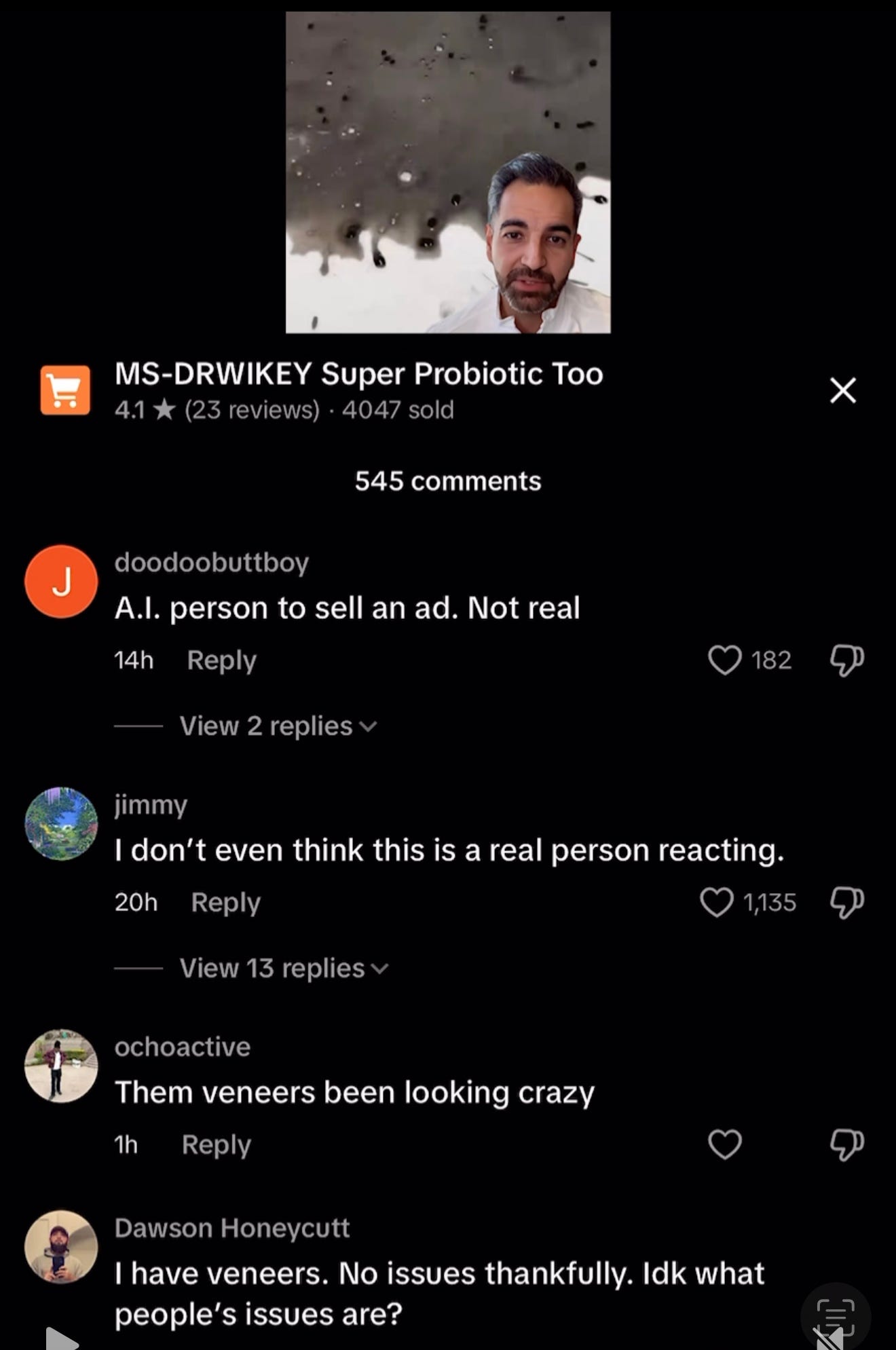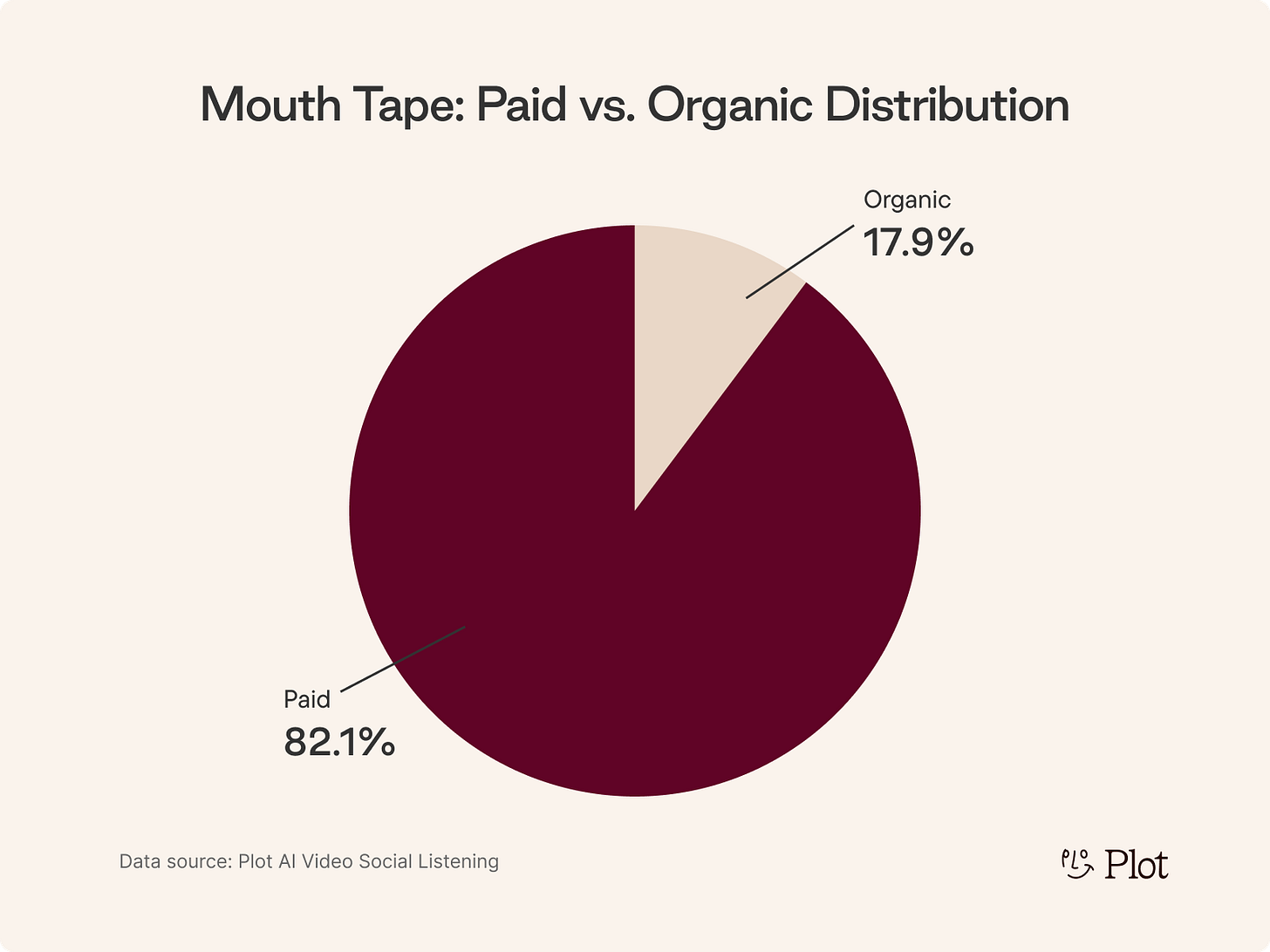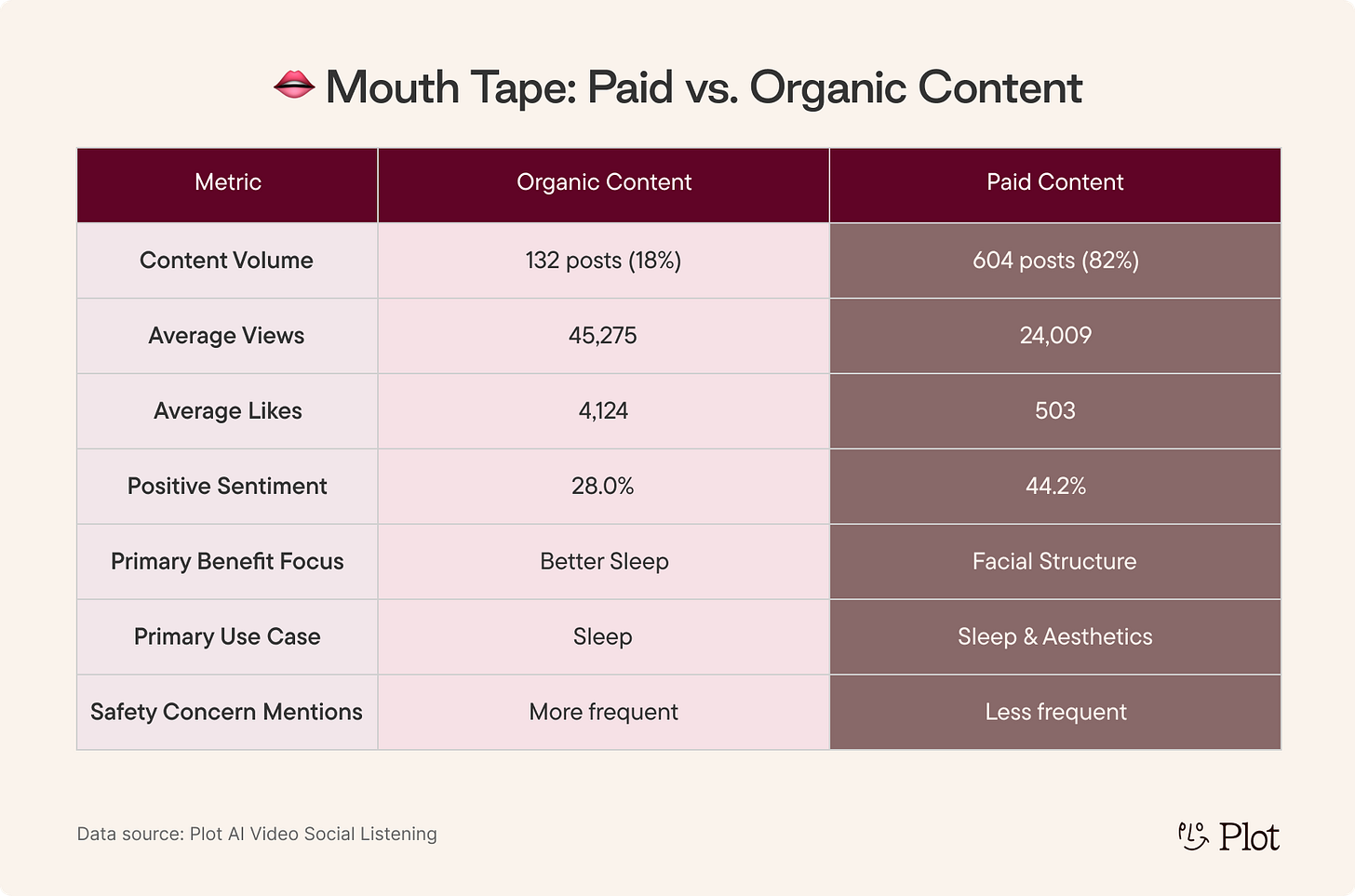Beef Tallow & Mouth Tape: TikTok's Fabricated Obsessions
Part II AI Villain Era: Unpacking the latest coordinated marketing campaigns and taking a look at the content from a bird’s eye view.
Skincare and wellness influencer Arielle Lorre last week was shocked to discover a video of herself on a podcast promoting a skincare product she'd never endorsed. The person in the interview looked and talked exactly like her, but the entire video was AI-generated. Doctors are finding their likenesses used to defend dubious health claims too.
And for me... I'm seriously doubting everything I'm watching now. I can spot phishing scams instantly, but these fake UGC videos? The hooks methodically A/B tested and reused to keep my thumb from scrolling! That's next level deception. And clearly, I'm not the only one getting played.
Two recent viral trends caught my attention: beef tallow skincare and mouth tape. While scrolling TikTok, you've probably seen countless testimonials about beef tallow transforming skin or mouth tape sculpting jawlines. But something felt off about how quickly these trends exploded.
I decided to investigate whether these overnight sensations were authentic consumer enthusiasm or manufactured hype. The results were disturbing.
One brand accounts for 33% of all beef tallow content on TikTok. January 2025 saw a suspicious blitz of coordinated videos instead of natural growth. Creators admit being paid $500 monthly to produce content generating $25K daily on Amazon.
Let's examine how these AI-driven marketing schemes manipulate consumer trust and why it matters for everyone—consumers, experts, and brands alike.
Case study 1: Beef tallow 🐄
Beef tallow: the skincare savior or just another scam?
After using Plot’s AI tool to analyze all social video content across TikTok and Instagram Reels—Plot uncovered nearly 2,000 posts about beef tallow skincare, with TikTok being the clear battleground.
To investigate deeper, I prompted our AI Analyst to examine the effectiveness, benefits, safety risks, and sentiment patterns around beef tallow skincare—specifically requesting comparisons between paid versus organic content. What happened next was fascinating.
Without explicitly asking about marketing tactics, the AI independently identified a coordinated campaign behind the trend. The report repeatedly highlighted one specific brand accounting for 33% of all content, along with their creator network and templated messaging strategies. Through pattern recognition, our analysis revealed the invisible orchestration behind what many consumers believed was a grassroots skincare movement.
This just goes to show that there really was one brain behind a massive wave in consumer zeitgeist. One TikTok even spilled that the brand is paying creators $500 per month to pump out AI-generated videos. The result? $25K per day on Amazon sales for their beef tallow product. 🤯
We also found that January 2025 saw a blitz of beef tallow ads all at once, which looks much different than the arc of an authentic viral hit that tends to start with some early grassroots buzz before making it big.
Not only did our report spell out for us that the beef tallow boom was a coordinated scheme – it also told us how the brand behind it all pulled this off: a creator network that enlisted dozens of creators to churn out frameworked content. Think before-and-after shots, anti-aging claims, and “natural alternative” narratives.
What are consumers saying?
While the coordinated content is full of glowing reviews for beef tallow skincare (usually fast-following some light fearmongering), only 30% of comments were positive while 40% were negative, with skeptics calling out unverified health claims and over-the-top promises.
Comments our AI Analyst found:
“Beef tallow isn't great for all skin. It contains oil, especially olive oil that is not good for acne prone skin. It may work for some but unfortunately not for all." (9,646 likes)
"I am not putting beef on my face." (7,915 likes)
"Your still doing this..The beef industry in which your favorite product comes from contributes to more harm to everyone collectively (climate change) than Cerave making you individually break out.” (4,773 likes)
Digging into the comments revealed a totally different story. People with acne-prone skin reported wildly mixed results (surprise, surprise). The smell was a major complaint, nobody wants to walk around smelling like they fell into a deep fryer. And those highly liked comments about beef industry environmental concerns? That's the kind of fundamental disconnect these brands miss when manufacturing trends – consumers actually care about sustainability, not just shiny promises of perfect skin.
While the beef tallow buzz definitely deceived some, it left others scratching their heads and saving their wallets.
Case Study 2: Mouth Tape 👄
Mouth tape: a viral sleep hack with a hidden agenda
It's tape. For your mouth. Yes, really. If you've spent any time on TikTok lately, you've seen the claims: better sleep quality, transformed jawlines, reduced snoring. But our analysis revealed something troubling: over 80% of mouth tape content online is paid rather than organic—another "trend" driven primarily by brand marketing rather than genuine consumer enthusiasm.
The most unsettling finding? A clear messaging divide. Organic content primarily discusses sleep benefits, while paid content focuses on facial structure and appearance. This targeting strategy deliberately preys on appearance insecurities (literally saying people are getting uglier) rather than health benefits. Let’s put a breakdown of paid and organic content side by side:
It's no secret that brands often benefit from slimy strategies that prod at consumers' biggest vulnerabilities, like weight and beauty, to win sales. As consumers gained platforms to voice frustrations over the past decade, brands have become more accountable—backlash can spread like wildfire with just one frustrated customer's post.
But greater accountability didn't end the scheming; it just made it subtler. Case in point: the stark difference between how mouth tape is messaged by brands (miracle jawline solution) versus organic consumer content (better sleep tool). And predictably, those paid posts conveniently downplay safety concerns.
Though, unlike Beef Tallow—our report revealed that mouth tape seems to trend more positively, despite the dodgy videos we see. For better or worst, this marketing scheme works and everyone should know the playbook.
Why this matters
The rise of beef tallow and mouth tape are case studies of how AI can weaponize consumer trust. Coordinated marketing campaigns and faceless UGC can reshape public opinion overnight – whether it’s hyping a niche product or tearing down competitors with fake slam content. For brands navigating this new reality, Plot is the ultimate ally – your white knight. We don’t just track consumer sentiment. We decode the narratives shaping it. Whether it’s exposing shady tactics of helping brands respond to crises, Plot is here to protect your reputation – and your bottom line.
So next time you see a video hyping beef tallow or mouth tape, take a closer look. Is it authentic? Or, is it just another chapter in AI’s villain era? Either way, Plot’s got your back.
Xoxo,
Megan
About Plot’s AI Analyst
Plot’s AI Analyst lets us generate extensive reports on any topic using social listening and powerful visual ID to analyze all social content – even videos that aren’t tagged but show a relevant product for a split second. Our reports cover a breakdown of content volume and distribution, common messaging patterns, sentiment analysis, and noteworthy findings.
Our AI Analyst can help brands across all use cases, whether they want to know what consumers are saying about their latest product or need to separate genuine buzz from manufactured noise they’re seeing online. For marketers worried about losing ground to the latest AI-generated schemes – or worse, being targeted by them – Plot offers clarity in the chaos.











